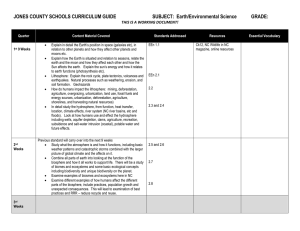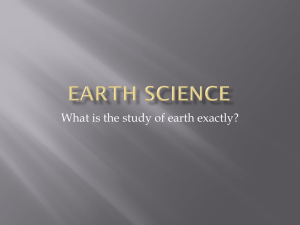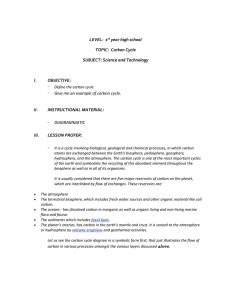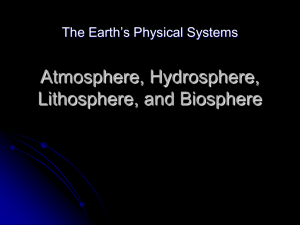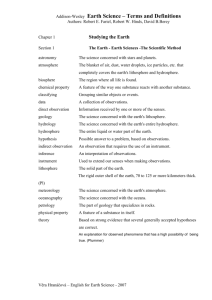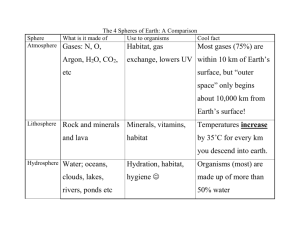Unit B: Sustainable Ecosystems and Human Activity Chapter 2: Understanding Ecosystems
advertisement
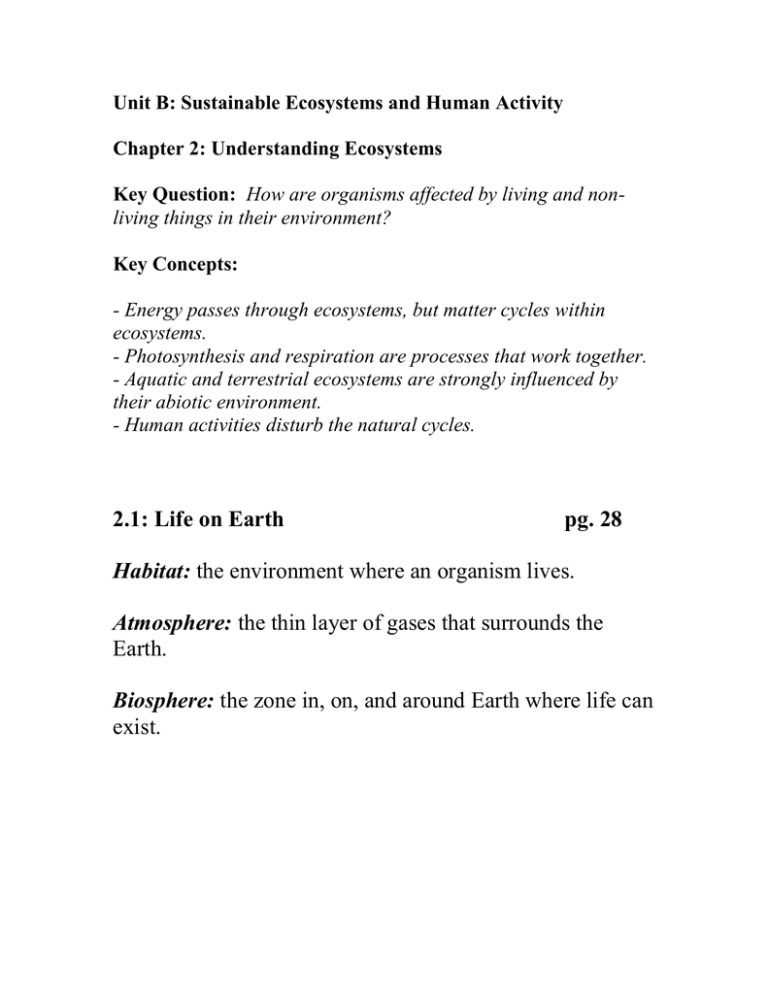
Unit B: Sustainable Ecosystems and Human Activity Chapter 2: Understanding Ecosystems Key Question: How are organisms affected by living and nonliving things in their environment? Key Concepts: - Energy passes through ecosystems, but matter cycles within ecosystems. - Photosynthesis and respiration are processes that work together. - Aquatic and terrestrial ecosystems are strongly influenced by their abiotic environment. - Human activities disturb the natural cycles. 2.1: Life on Earth pg. 28 Habitat: the environment where an organism lives. Atmosphere: the thin layer of gases that surrounds the Earth. Biosphere: the zone in, on, and around Earth where life can exist. Diversity of Life on Earth The area in which an organism lives is known as its habitat. There are terrestrial and aquatic habitats. Terrestrial habitats are those that are found on land and contain different types of ecosystems. Aquatic habitats are found in water, there are different types; freshwater, estuaries, and marine ecosystems. Earth’s Spheres The Atmosphere The earth is surrounded by a layer of gases known as the atmosphere, which can also b subdivided into different layers; Troposphere, Stratosphere, Mesosphere, Thermosphere, and the exosphere, which are responsible for controlling the Earth’s temperature, block harmful UV rays, and climate. The atmosphere contains gases: Nitrogen (78 %), Oxygen (21 %), and Carbon dioxide and other gases (water vapour) (1 %), which are necessary to keep organisms alive. Lithosphere and Hydrosphere The lithosphere is the terrestrial land forms; the mountains, grasslands, and the ocean floor; that make up the shell of the Earth. The Hydrosphere is the aquatic environment made up of; oceans, lakes, rivers, creeks, swamps, ponds, ice, and clouds above and below the Earth’s surface. The Biosphere The biosphere is the areas where living organisms may exist, which include the atmosphere, lithosphere, and hydrosphere. Figure 3: The biosphere is a thin layer that includes land, water, and air. Check You Your Learning; Questions 1 – 4, pg. 29 Wrap Up: - Earth has a variety of organisms living in habitats on land and in water. - Earth’s spheres include the atmosphere, lithosphere, and hydrosphere. - The atmosphere moderates the temperature and amount of radiation that reaches Earth. - The biosphere is where life can exist in the atmosphere, lithosphere, and hydrosphere.

